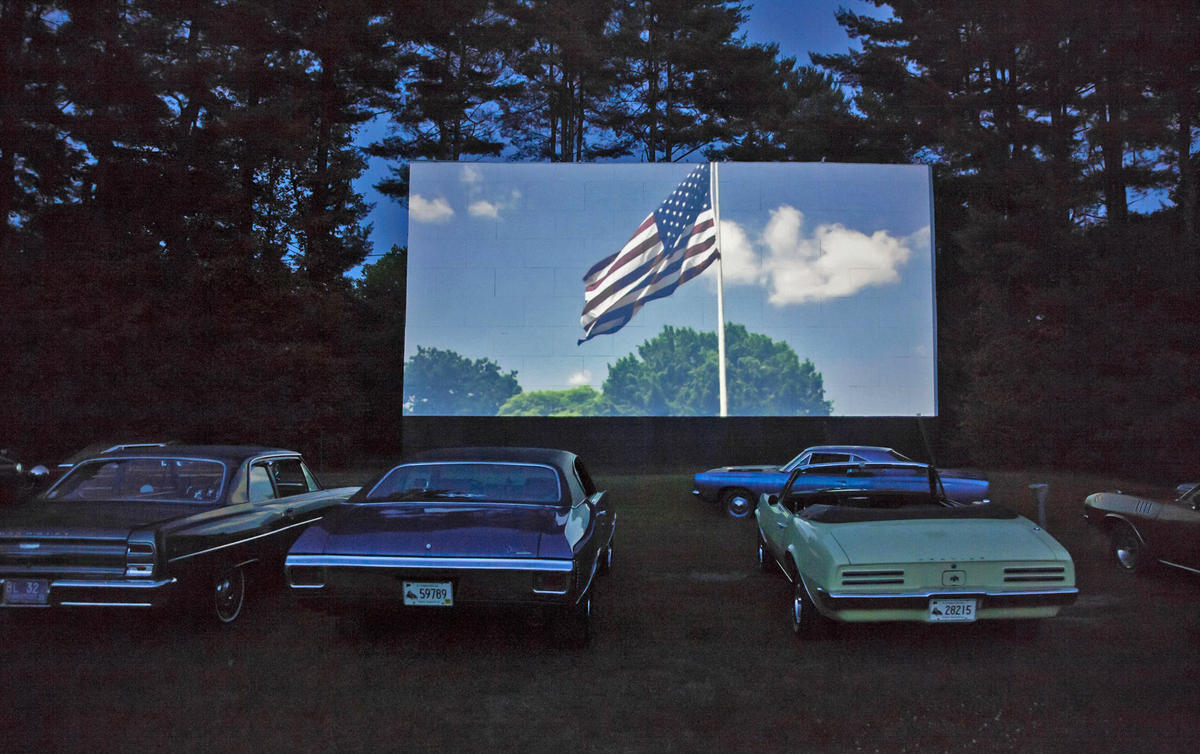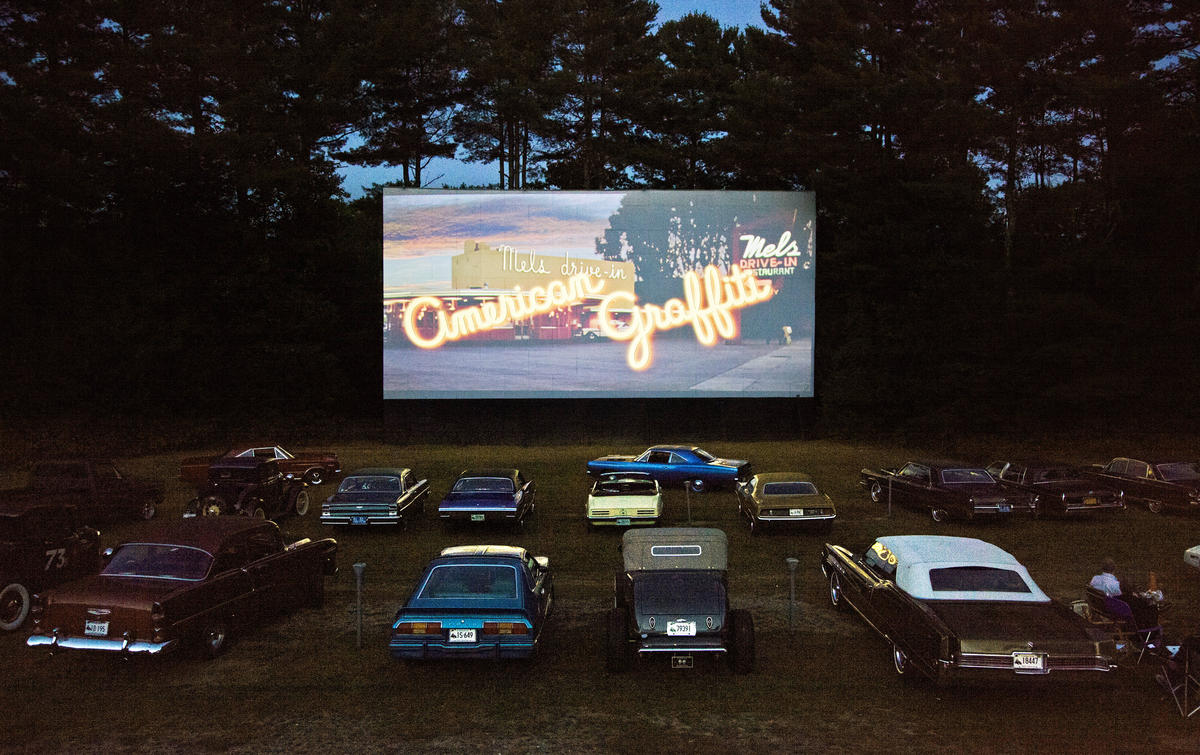
scroll

The Pleasant Valley Drive-In photographed on September 20, 2014 in Barkhamsted, CT
Last Night at the Pleasant Valley Drive-In
drive-inS haVE been in decline since the 1970s and, until recently, seemed on the verge of extinction. But one small town in Connecticut decided their theater wasn't going down without a fight. The inside story of the battle to save an American institution.
by Anthony Breznican | Photographs by Gillian Laub
We hold on tighter to things when they begin to slip away, even if it’s too late. Maybe that’s when we realize how much they meant to us. Sometimes we manage to save them—if only for a little longer.
Nineteen years ago, that impulse is what made Donna McGrane decide to do something crazy, something her family and friends thought was a really bad idea: buy the Pleasant Valley Drive-In in her hometown of Barkhamsted, Conn.
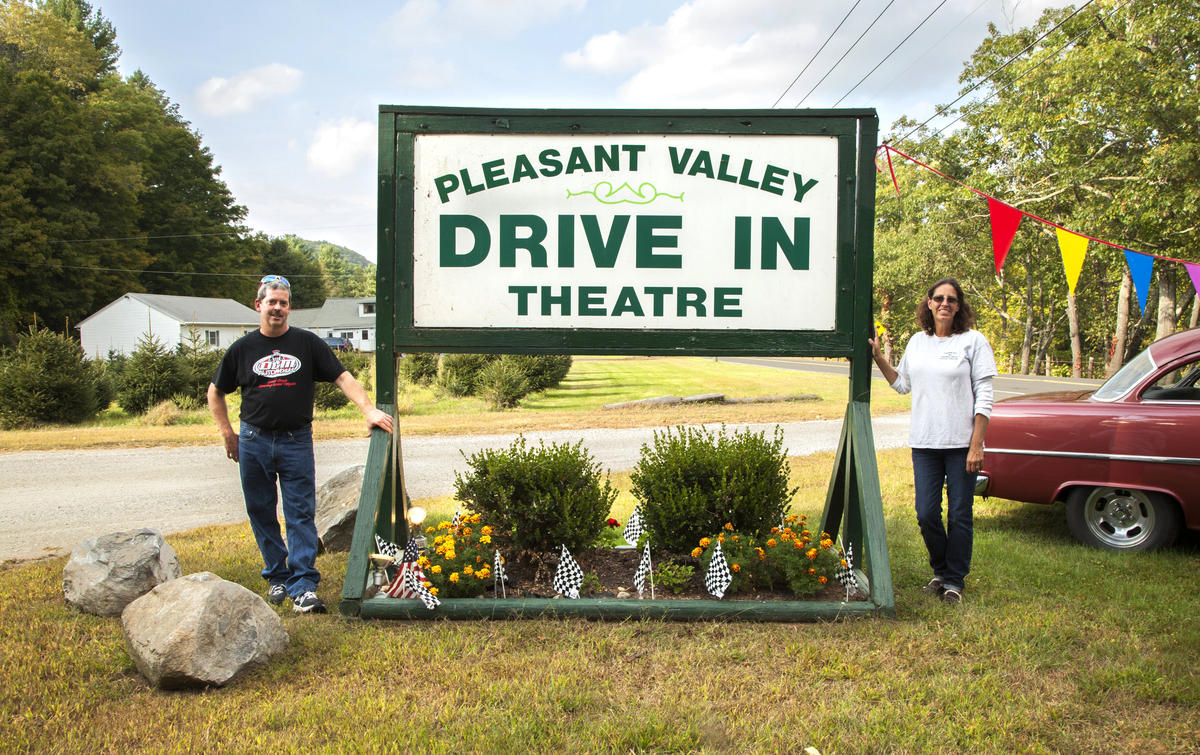
Donna McGrane and husband in front of the Pleasant Valley Drive-In Theatre
Picture this: summertime, 1960-something. Four little kids huddled in the back of a station wagon. She’s one of them. Debbie, the oldest, and Donna, who is the middle daughter, are looking after their younger sister, Cathy, and baby brother, Peter. Their mother and father worked at the drive-in, so the four of them were regularly up way past their bedtimes and watching movies they were probably too young to see through the open tailgate.
This was the heyday of drive-in movie theaters, the peak of America’s car culture, and this patch of rocky, gently sloping land in the northwestern Connecticut woods was packed with vehicles inhabited by shadowy figures, with the glowing white wall at the front of the clearing reflecting off their windshields.
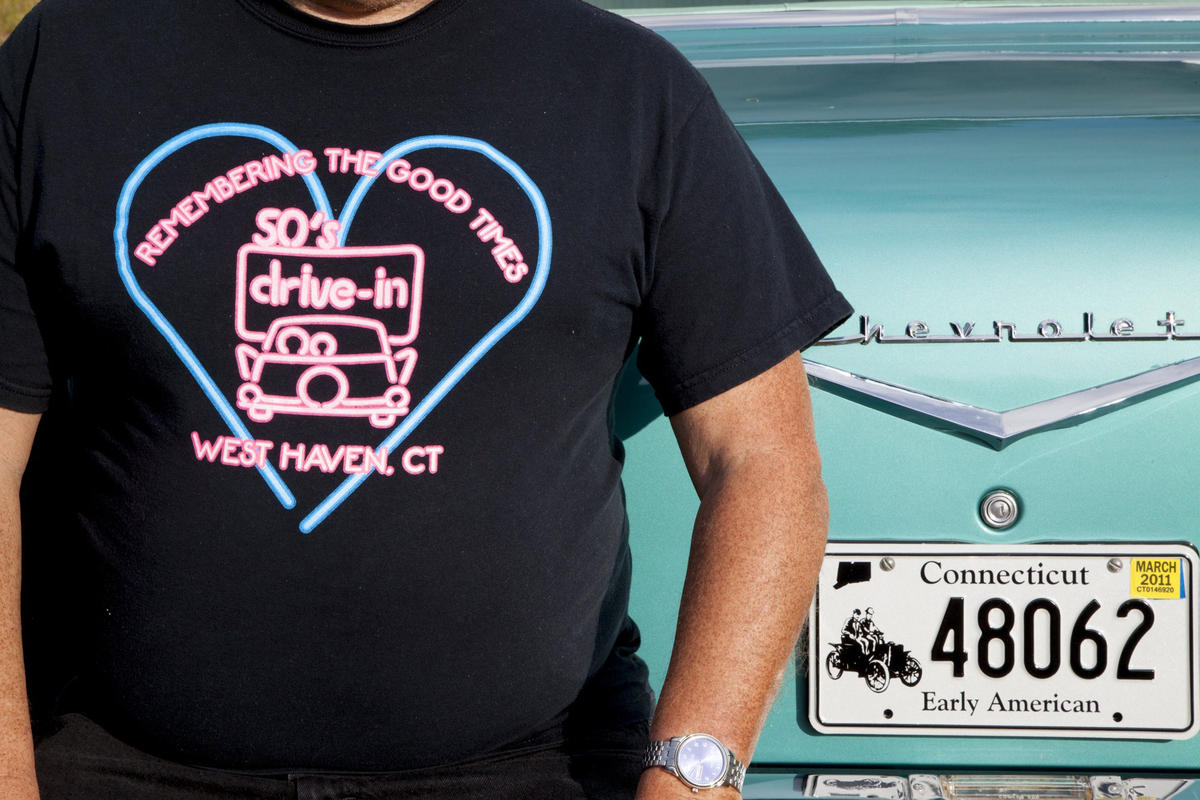
“I just remember being snuggled up in the back in our pajamas with our blankets and having a great time,” McGrane says. “It just sticks in my mind so clearly as being a wonderful part of my life. Probably because we were all together.”
McGrane, now 54, has a hard time naming the movies she saw back then. She remembers romping around in the car with her brother and sisters, most of whom still live nearby. She remembers the car parked beside the concession stand where their mother sold hot dogs, hamburgers, and candy. Their father ran the projector for the drive-in’s owner, and the kids wouldn’t see him until the double feature ended. But every now and then, the backdoor of the kitchen would bang open and their mother would venture out to check on them, usually hauling a clean garbage bag filled with fresh popcorn.
McGrane never would have guessed that someday she would be the drive-in’s owner. She certainly never imagined she might be the one who had to shut it down.
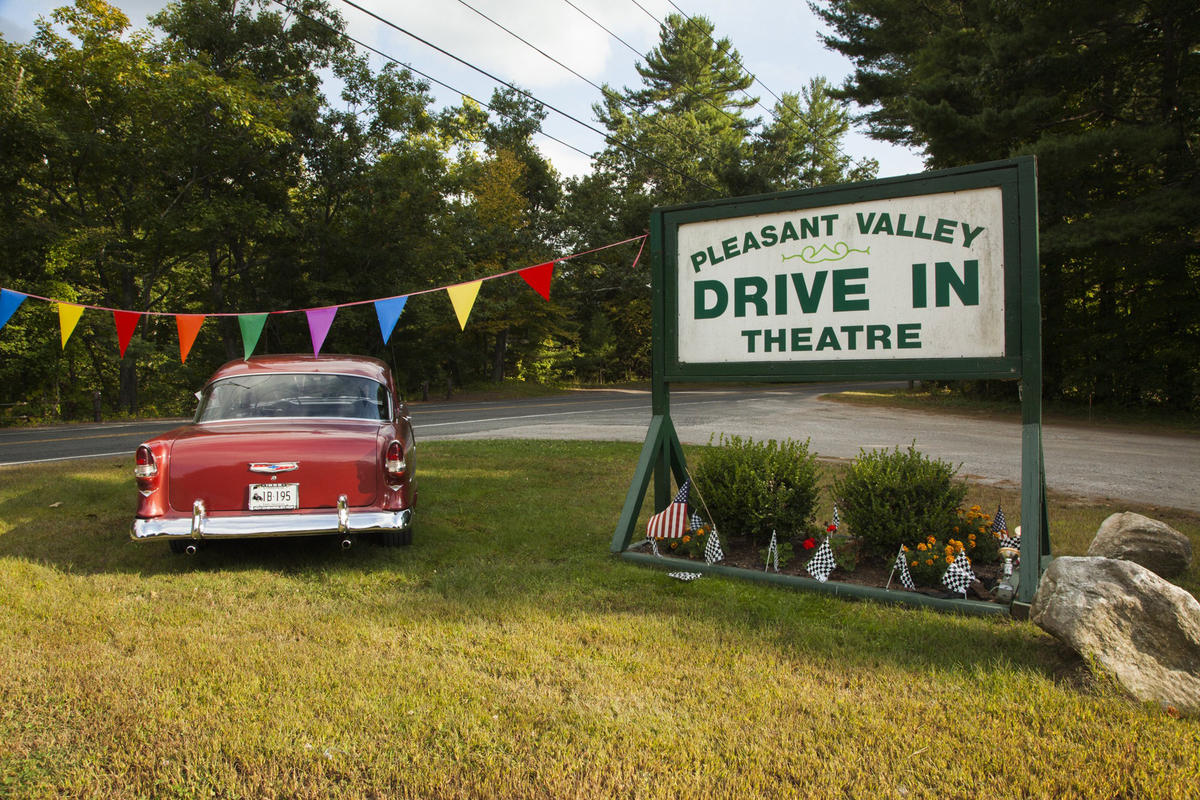
Drive-ins are an increasingly endangered species. The battle for survival that Pleasant Valley has undergone is one they’ve all had to fight, and not always successfully.
Decades ago, drive-ins were everywhere, a vital piece of pop culture Americana. The peak was in 1958, with 4,063 drive-ins across the country, and they held strong until the late 1970s, when they began falling victim to city expansion and rising property values. Then, in the 1980s, the proliferation of home video dealt a crushing blow. Almost a thousand theaters closed in that decade, and the trend has been steep and downward ever since. As of last year only 348 drive-ins remain, and the number gets smaller almost every year.
It was already a hard-fought business in 1996, when McGrane heard Pleasant Valley was up for sale. That’s why her mother and father urged her to forget about it.
“I said, ‘The place is falling down. It’s a wreck, it needs money. Don’t do it,’ ” says her mother, Marquis Haynes, now 80. “I said, ‘The only reason you want to buy it is because you’re nostalgic about it.’ She said, ‘I know. I have to have it.’ ”
What did her father say? Paul Haynes, now 85, shakes his head. “They don’t listen to me anyway; I never weighed in on it one way or the other,” he says. “Whatever she was going to do she was going to do.”
But Mom and Dad were both wrong. “She has totally loved this place since she bought it,” Marquis says.
“Keeps her happy,” says her father. “Keeps her busy.”
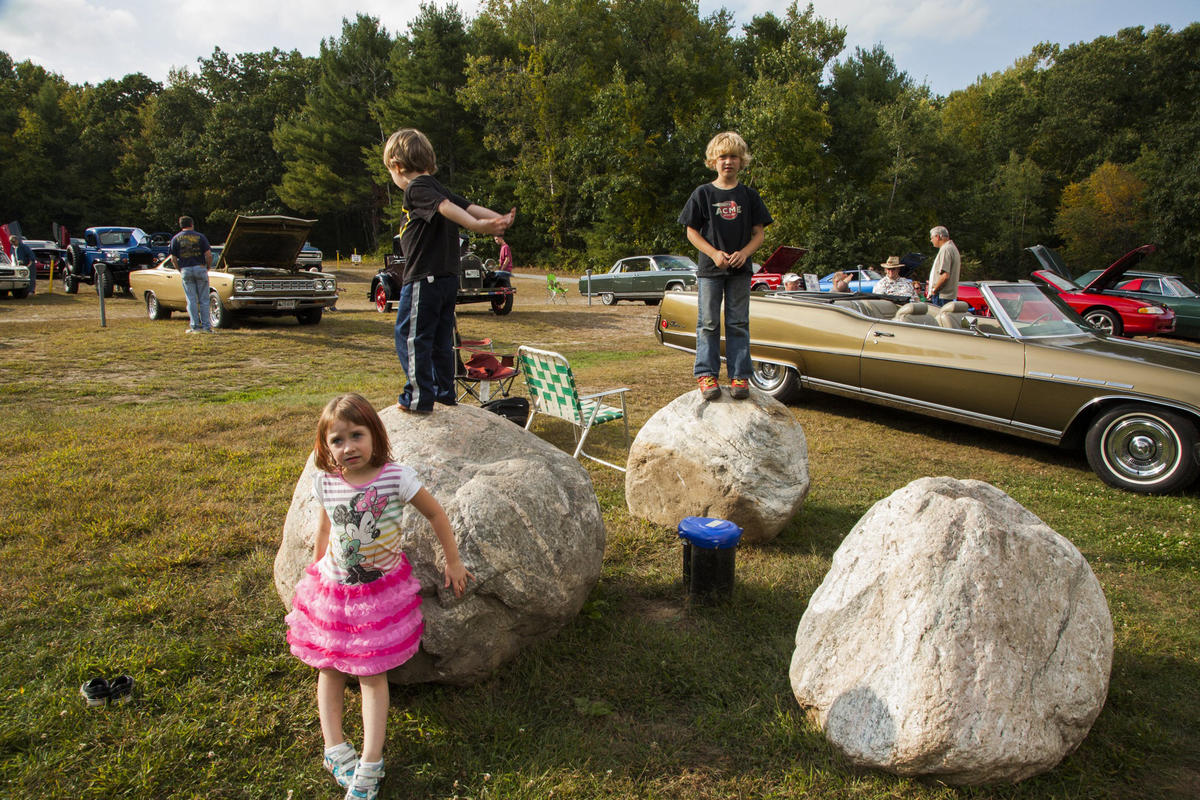
Families park in the front, and usually they get out and picnic beside the car so the kids can run around.
McGrane’s three children were raised just like her—hanging around watching movies while Mom worked. Donna and her husband, Tim, also own McGrane’s on the Green, a diner in nearby Winsted, Conn., but the drive-in is her baby, like a fourth child. She hoped that one day one of their kids would take over the business and keep it going. Ticket sales have been healthy overall, but the biggest threat was not attendance. It was whether they’d still have movies to show.
Last year, the major studios converted to digital-only prints, which meant theater owners had to get rid of their old reel-to-reel film projectors and purchase the state-of-the-art computerized ones necessary to play them. Without one, there could be no more first-run flicks. A new projector would cost north of $80,000, but not getting one would cost them most of their business.
Those were the choices, but the McGranes couldn’t afford either of them.
It’s the kind of quandary almost every drive-in owner had to face.
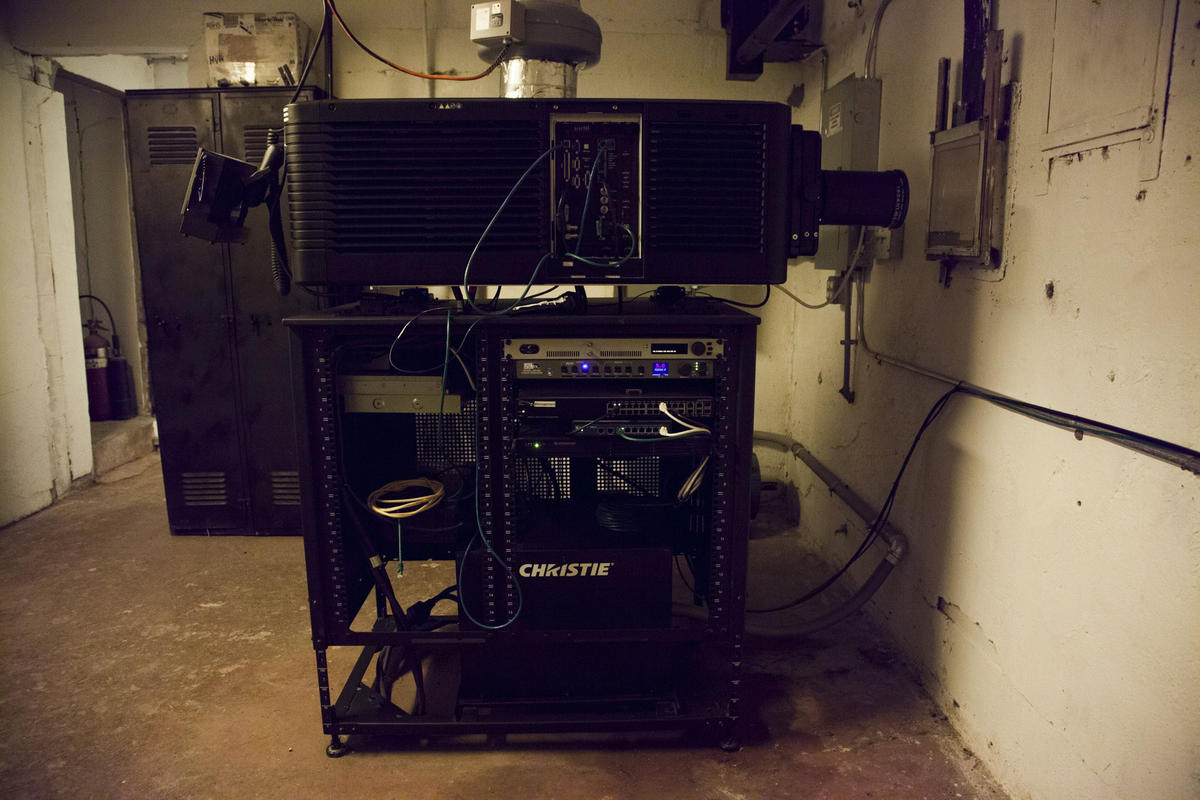
Inside the projection room
It’s late September, 2014. Donna McGrane’s car is the only one in the lot. The drive-in looks like the remnant of some Neolithic monument in daylight, with its rubble-strewn terraces tacked with rows of metal poles that once held detachable speakers—until the drive-in began broadcasting audio via short-range radio. The low-roofed kitchen is wedged into the center like a sideways ax blade, and a squat bunker in front of it houses the projector.
This is the last weekend of the season. McGrane is not sure if it will be its last weekend ever, but she thinks not. She hopes not. But like every drive-in theater, Pleasant Valley is always one complication away from shuttering for good.
September is a dud time for new movies, and she’s hoping to end with a bang, so she has booked a retro-themed double feature: 1973’s paean to youth and speed American Graffiti, and 2013’s Formula One racing saga Rush. On Sunday she’s hosting a classic-car show at the drive-in, and she’s hoping these films will bring out the gearhead crowd. But first, she has to get things ready, prep the projector and the kitchen. While she does her chores, she gives a tour.
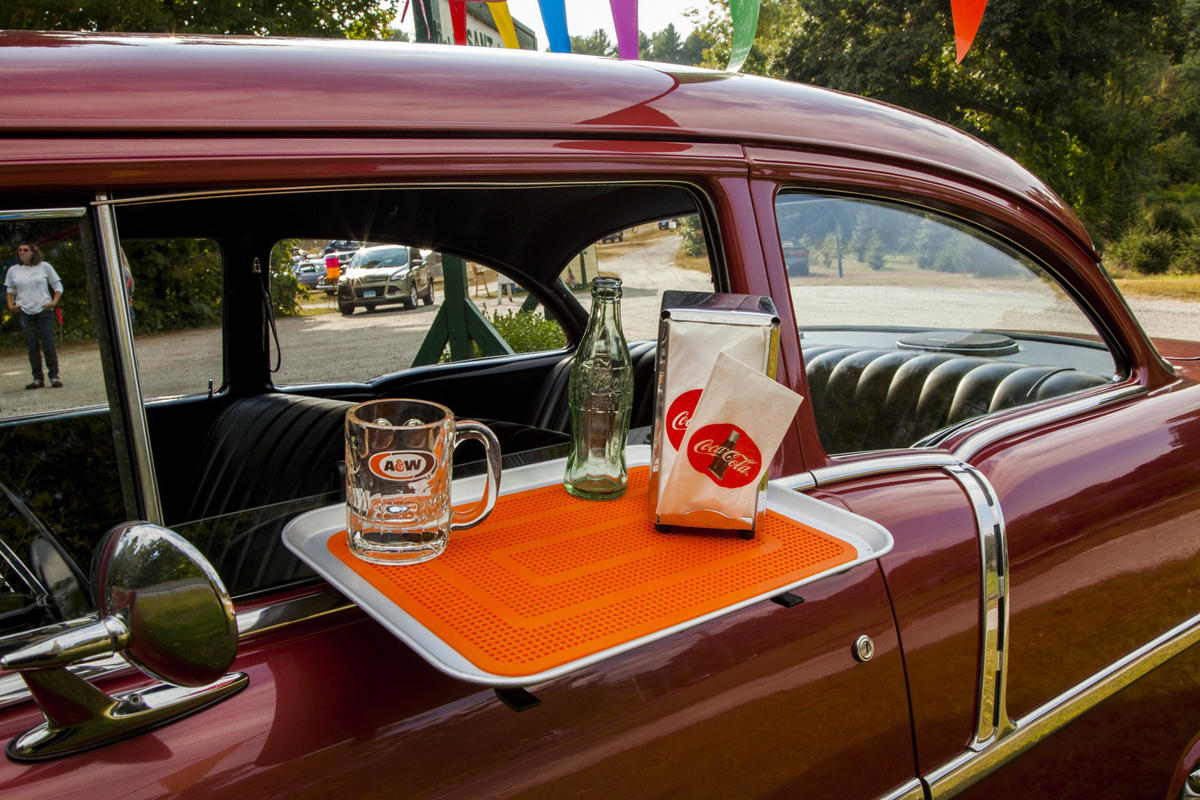
Families park in the front, and usually they get out and picnic beside the car so the kids can run around. Older couples are the ones parked in the middle, and teenagers always settle in the far back, along the tree line. You can guess why. “You don’t even want to know what I find,” McGrane says. “What do you come to the drive-in for? I have older people pull in and say, ‘Our first child was conceived here!’ ”
The ceiling of the concession stand was built extremely low so cars on those upper levels can see over it. When she’s hiring staff, the short of stature get a leg up. “There’s definitely a height requirement on my cooks,” McGrane says. I tell her I’m six feet tall as we walk inside, and she shakes her head. “You absolutely couldn’t work here. It’s even lower right there behind the grill.”
The screen is made out of giant sheets of plywood nailed to a narrow pyramid of wood and metal beams. You can climb up inside of it if you want, but McGrane doesn’t recommend it. “That’s where the bats live,” she says.
Being surrounded by woods means all manner of creatures tend to turn up for the shows. It’s not uncommon for raccoons and foxes to help clean up the lot after shows. “The funniest thing is last summer, I had Brave playing and I had a pretty full lot,” she says. “The front row was all young families with little kids, all out on their blankets. The movie’s playing and a bear came out of the woods over there and walked right in front of the screen. I swear to God,” she adds, raising her hand in the air.
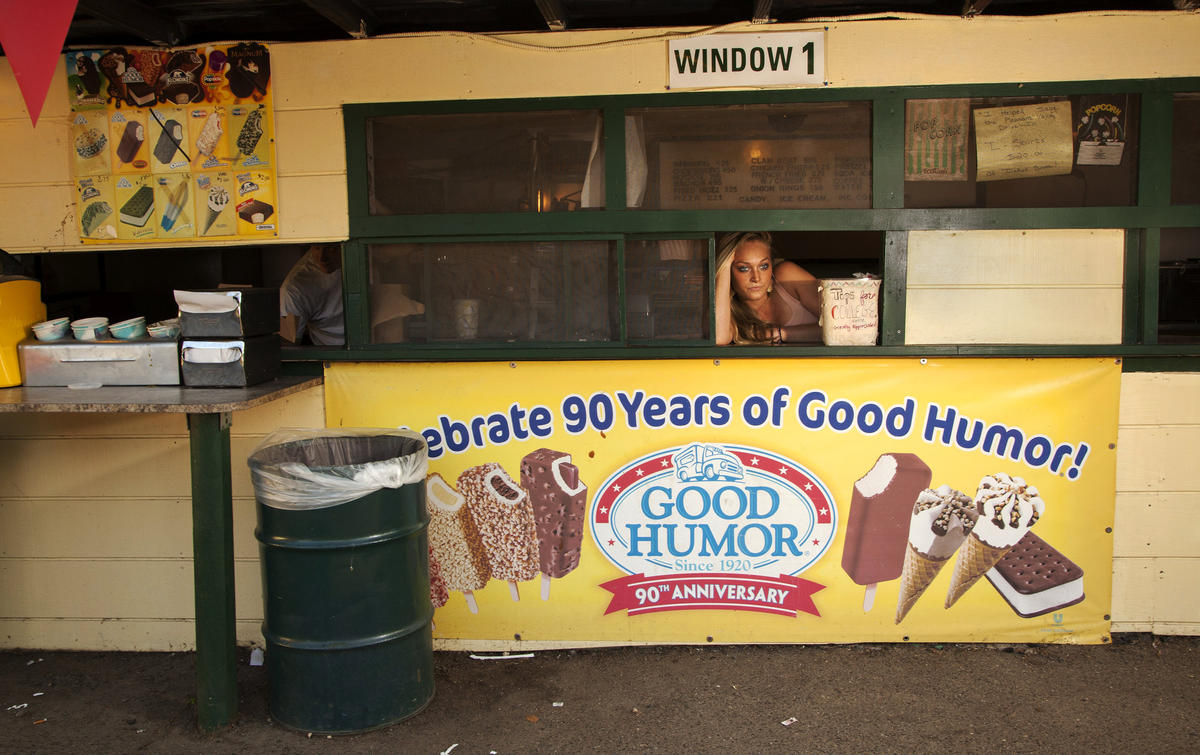
Bethany Brochu works the concession stand
The locals are used to bears, so they simply went back to their cars. The problem was the visitors from nearby Hartford. City folk. “They were grabbing their kids, going, ‘Come on, let’s go see the bear!’ I’m like, ‘No! Get back in your car!’ ”
You don’t get that experience watching DVDs at home.
There’s one space between the ring of trees for the entry, and in the middle sits a small shed with sliding windows. “This is my ticket booth. This is the only building that’s not original from 1947,” McGrane says. Even her original twin projectors dated back to that time.
“Two brothers opened the drive-in, and they went up to Boston to a Navy auction and bought the original 35mm projectors off a ship,” she says. “That’s why I never wanted to part with them. They were the coolest things you’d ever seen. Those things were monsters.”
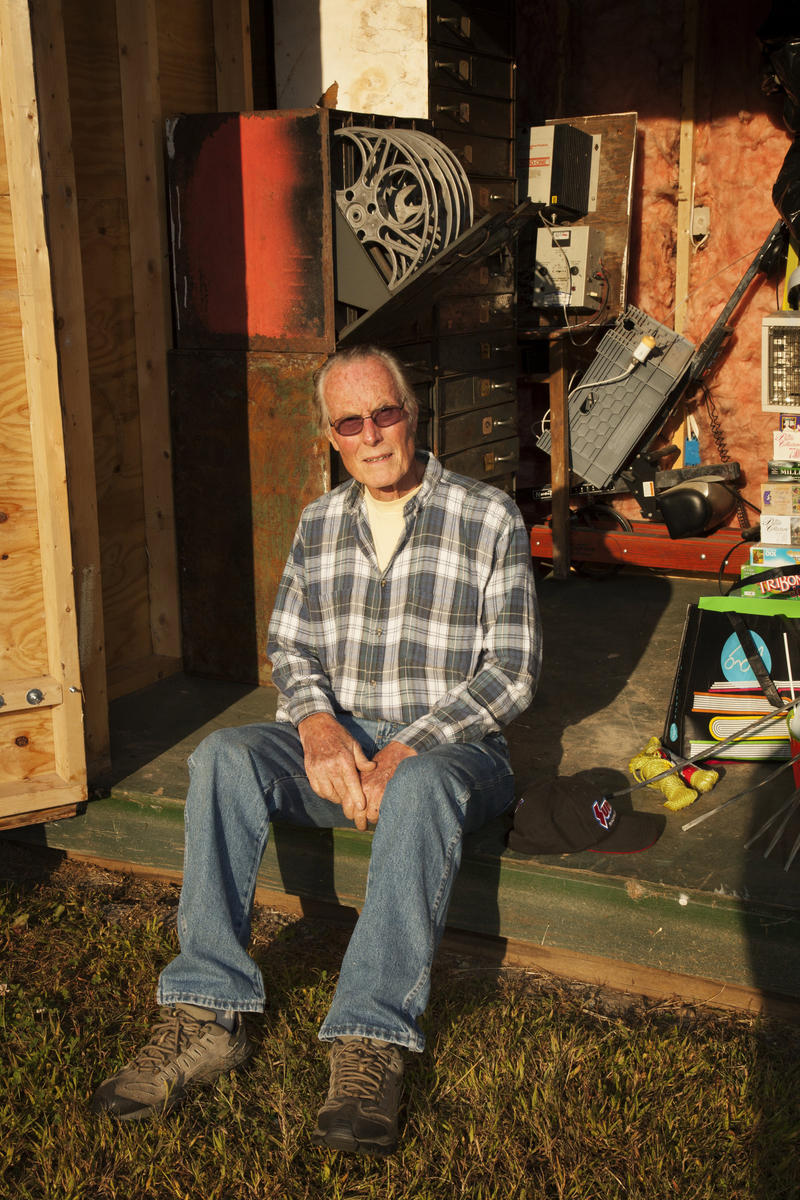
Retired projectionist Norm Schaefer
Norm Schaefer was the man who tamed the monsters. For 16 years, he was the quiet, lanky figure tending the projectors, which were so old they needed to be babied, oiled, greased and cleaned.
The 80-year-old, whom everyone says looks like Clint Eastwood, only did the job because he liked the machines, not because he loved movies. “No, not at all. You can’t even see them,” he says, eyes narrowing. “And when you’re watching it, you’re watching it for the dots [that mark the change reels], so you can’t watch the movie.”
This is a common refrain among the drive-in’s workers. Nobody is a film buff. McGrane rarely watches the movies because she’s busy selling tickets in the driveway. Bethany Brochu, 25, who works the concession stand, says you end up listening to a lot of movies, over the radio or reverberating through the lot from all the individual car stereos. But you never watch them.
Spending the weekend at Pleasant Valley, it’s clear movies aren’t what make a drive-in special. It’s the atmosphere. The canopy of stars, the greasy food, the kids running around in front and the older kids fooling around in the back. People don’t come to the drive-in to experience the movie, they come to experience each other. Even lone wolfs like Schaefer find a place to fit in.
“Everybody that comes here has a story, even just strangers that I’ve met,” Brochu says. “Everybody is always very talkative and wants to share their thoughts and their life and why they’re here. The old couples are like, ‘I used to come here when I was younger and now I’m bringing my grandchildren.’
There’s young, old, my age, and little, little kids. They come in their pajamas with their blankets and get all comfy and watch a movie with their parents.”
She meets most of them from behind the screen, and it’s light inside the kitchen but dark outside, so she rarely makes out their faces. It’s like being in a confessional, only she’s the priest.
Friday night is quiet. About 80 cars. Helen Crump, 52, who took over running the projectors after Schaefer handed over the job, guides the cars into the lot and parks them like a runway marshal directing planes at the airport. It gets down to 46 degrees, which keeps people away.
One of the guests is Brady Miller and his wife, Sally, the former owners of Pleasant Valley who sold the business to McGrane. They can still come for free, and their kids come all the time. It’s clear they miss it, despite the job’s hassles, and as they sit in their car talking about the old days, their eyes stay on the screen, like they can see their past playing out there. “The crowd drops off right after Labor Day. Boom! And October—forget it,” Brady says. “We figured that out. It gets chilly at night. Then you just start getting the parkers. It’s too cold to bring kids.”
Saturday is busier. The car show attracts about 150 vintage vehicles and scores of looky-loos. They arrive in the afternoon, but most of them stay for the double feature. In fact, more cars show up for that. The lot is packed. It’s a great night for business.
One guest is particularly important to McGrane: Travis Lipinski, 32, a local property manager who shows up in a 1964 Chevelle and is greeted like family by the McGranes.
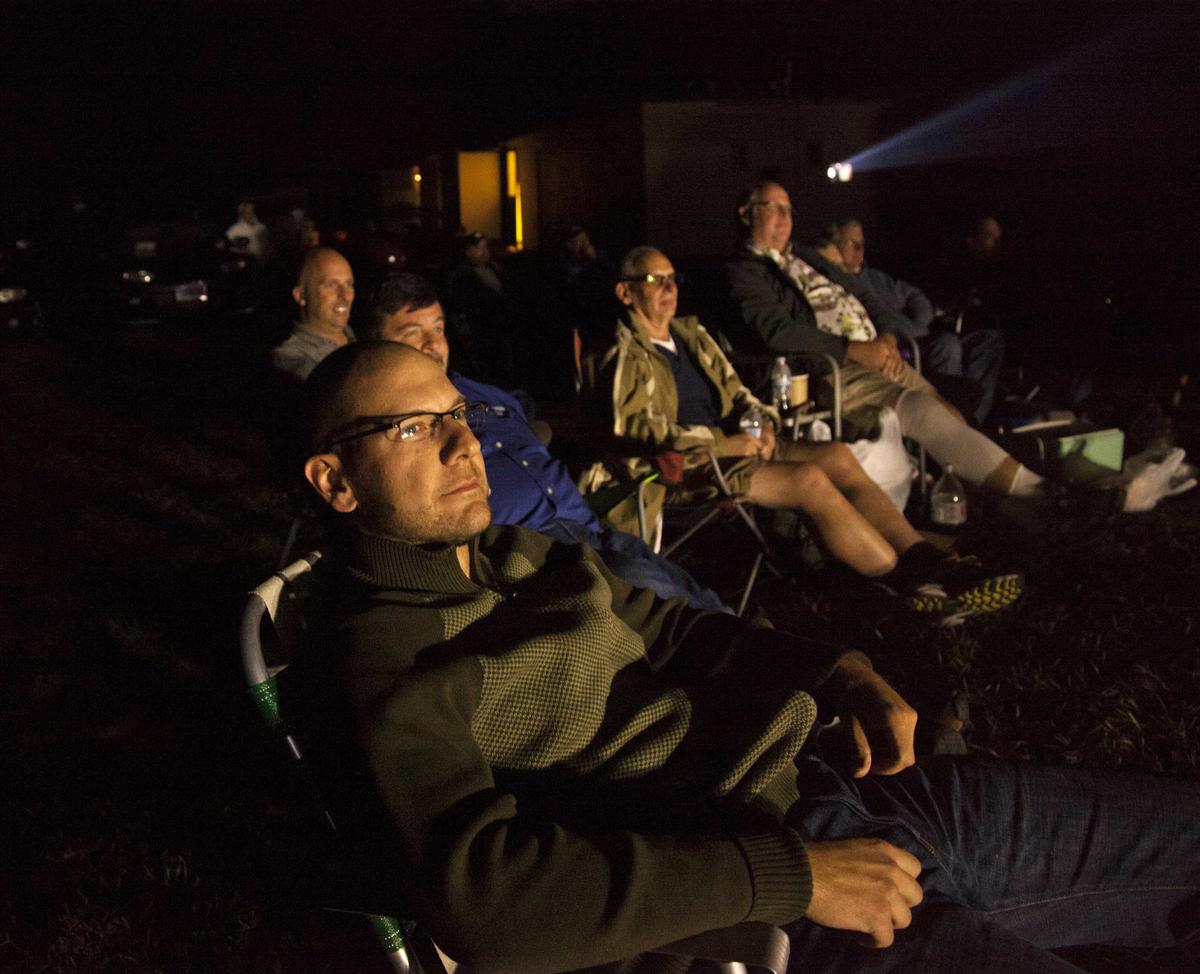
“I’m emotionally attached to it because I just love the place. What Donna is doing is my dream." — Travis Lipinski, local property manager
Lipinski had never even met the McGranes until he heard the drive-in might close because it needed a new digital projector. Lipinski is from a different generation, but he has the same memories that Donna does—summer nights under the stars, watching movies at this drive-in. “I’d been coming here since I was 10. Actually my parents are right there in the blue Ford Fairlane,” he says, gesturing to a middle-aged couple who wave back. “We parked in that same location in our ’84 Jeep Cherokee back in, I think it was the early ’90s.”
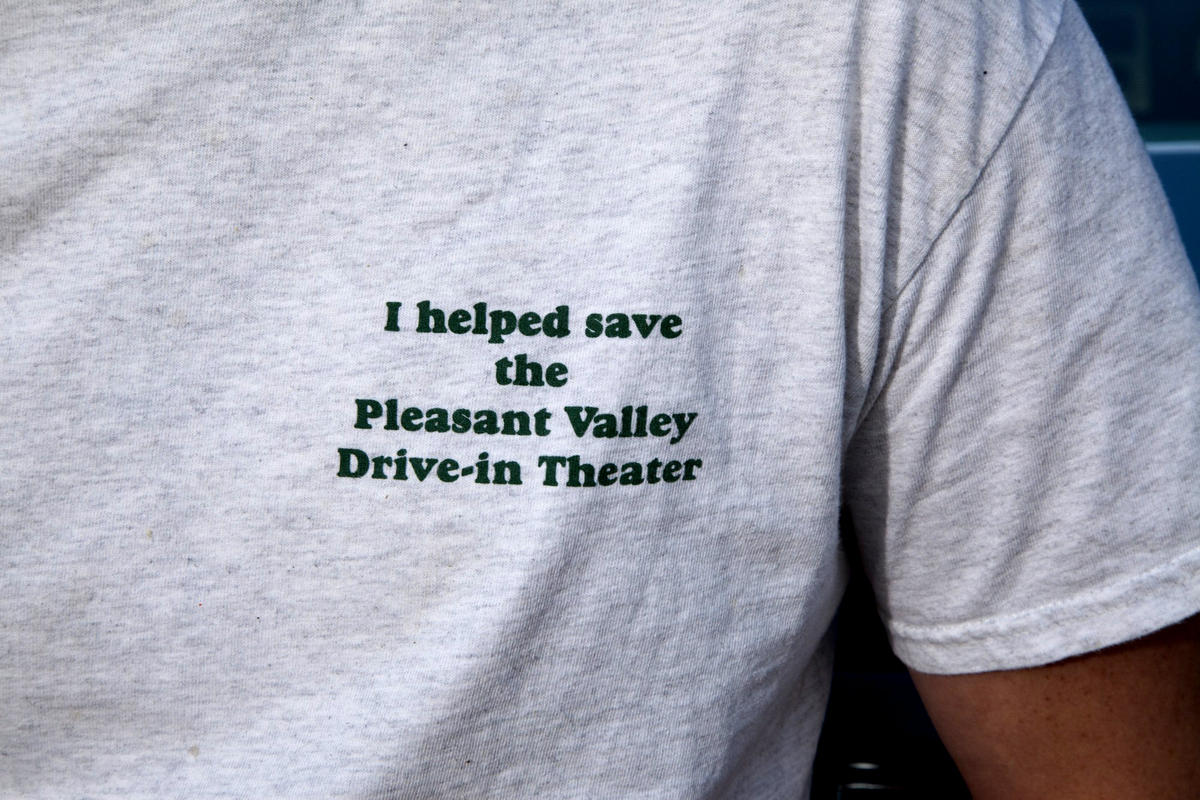
One day he called the McGranes at their restaurant and said he wanted to help. He got some of his clients to donate antiques for an auction, and persuaded a local Crystal Peak banquet hall to let him organize a benefit dinner. That got some local press, and everyone had high hopes, but in the days leading up to the dinner it seemed to be a failure. They’d sold only a few dozen tickets.
Maybe we sold 80 tickets. We had room for 220,” McGrane says. Then a miracle happened, the kind of thing that happens only in movies. The last-minute crowd turned out to be more than double the capacity. “The night of the event the line was down the street,” she says, her voice catching with emotion even months later. “People were buying tickets at the door. We didn’t have room for one more person in that place. We raised $21,000.”
That helped put them over the top for a down payment. Sitting inside that concrete bunker right now is a new Christie Solaria Series digital projector. It’s what allowed Pleasant Valley to have a 2014 season. And a 2015 season. And hopefully many more beyond.
What would have been lost if Pleasant Valley had closed?
“Goose bumps,” Lipinski says. “I’m emotionally attached to it because I just love the place. What Donna is doing is my dream. They always say, do what you love. I would love to own a drive-in and operate it. I’m doing all I can to help the owner help it.”
That night in September, about 150 cars stayed to watch the double feature. It was bitterly cold again, but it was also one of the last nights the drive-in would be open before winter set in. People turn out when they think they might not get another chance.
That’s really what rescued Pleasant Valley. And it may be the thing that saves other drive-ins, too.
We hold on tighter to things when they begin to slip away.
